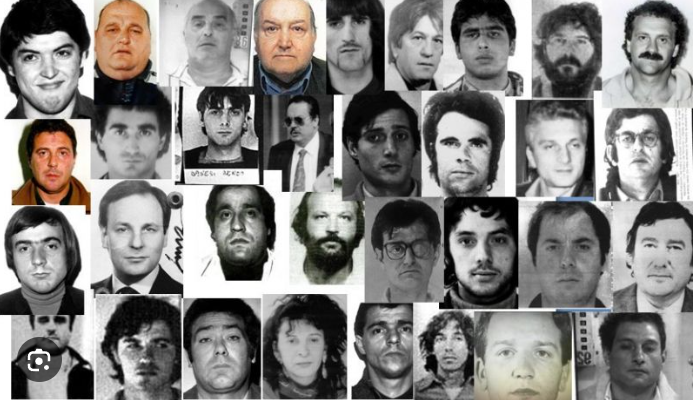A severe internal blow was dealt to the Banda della Magliana in 1986 when Claudio Sicilia became an official government informant. After surviving two attempts on his life, Sicilia was taken into custody for trafficking in and possessing firearms. On October 16, 1986, he repented as a result of his most recent arrest. His confessions allowed the investigators to uncover ten killings, connections between the Gang and neo-fascists, international drug trafficking, the Camorra, and relationships with institutions and power.
In February 1987, 91 arrest warrants were issued for as many people connected to the gang as a result of his interview. But within just one month, more than half of those detained were set free because Sicilia’s statements were found to be false. After making another attempt at suicide while incarcerated, he was placed under house arrest in December 1990 and released the following summer. After that, he relocated to the Tor Marancia neighborhood. Then, on November 18, 1991, after betraying his erstwhile allies, Sicilia was murdered by two men on motorcycles in an ambush in the neighborhood he had previously controlled. The murderers masked their faces, and they are still at large.
Enrico De Pedis and Edoardo Toscano were two more Magliana gang members who were killed in the two years between 1989 and 1990. Between the Maglianesi and the Testaccini, led by Toscano and De Pedis, a war had broken out as a result of all the rivalries, tensions, and jealousies within the gang. Their rivalry essentially put an end to the Banda della Magliana’s ambition to take over all of Rome. The testaccini’s connections to P2, secret agencies, and influential persons in politics and business made the Maglianese envious of their authority over prostitution, dealing, usury, and robbery. Former allies Toscano and De Pedis are engaged in combat.
Reorganizing the gang was the last thing the Maglianesi attempted to do, but the testaccini, who were now under De Pedis’s sole command, had little interest in doing so. As a result of De Pedis’s successful break from the gang, Toscano and Colafigli concluded that he had to pass away. But De Pedis chose to take the initiative after learning of Toscano’s plans. Using a gang member as a collaborator, De Pedis planned an ambush for Toscano in Ostia early on March 16, 1989. Angelo Cassini and Libero Angelico executed their plan of ambush, and Toscano was slain.
Colafigli set up a similar trap for De Pedis shortly afterward. By means of a gang connection named Angelo Angelotti, Colafigli arranged a rendezvous between De Pedis and himself on February 2, 1990, near Campo de Fiori. Colafigli concluded that the two murderers shouldn’t be gang members since De Pedis would identify them and flee if they were. When De Pedis and Colafigli first met, Angelotti made an odd gesture that seemed to be telling someone that the person in front of him was the one who needed to be hit.
After they split ways, two men on motorbikes joined De Pedis as he rode his scooter. Despite his wounds, De Pedis was still able to escape after being shot twice by the person seated. But after walking a hundred meters or so, he fell and passed rather quickly. Dante del Santo, also known by his nickname Cinghiale, killed De Pedís, and Alessio Gozzani, the motorbike’s driver, were both from Massa Carrara in Tuscany.

